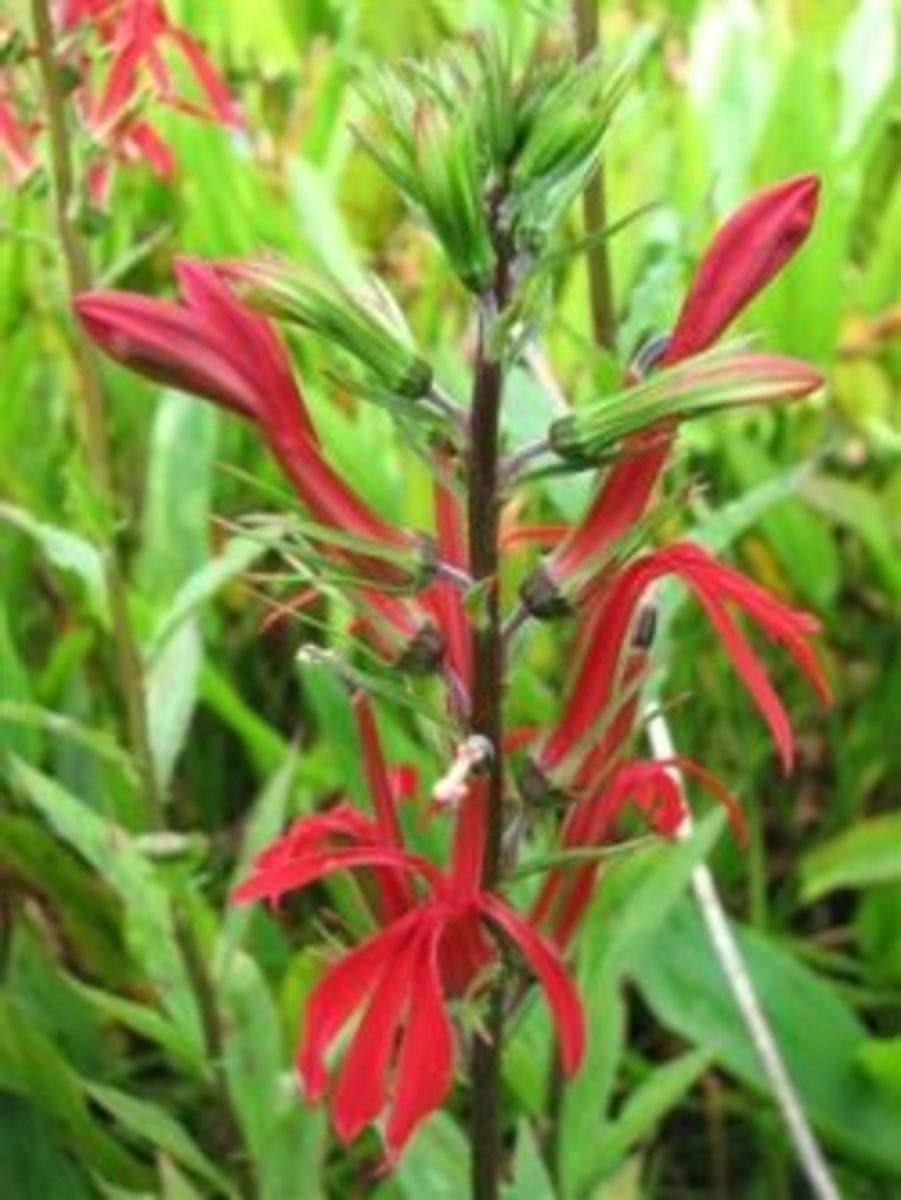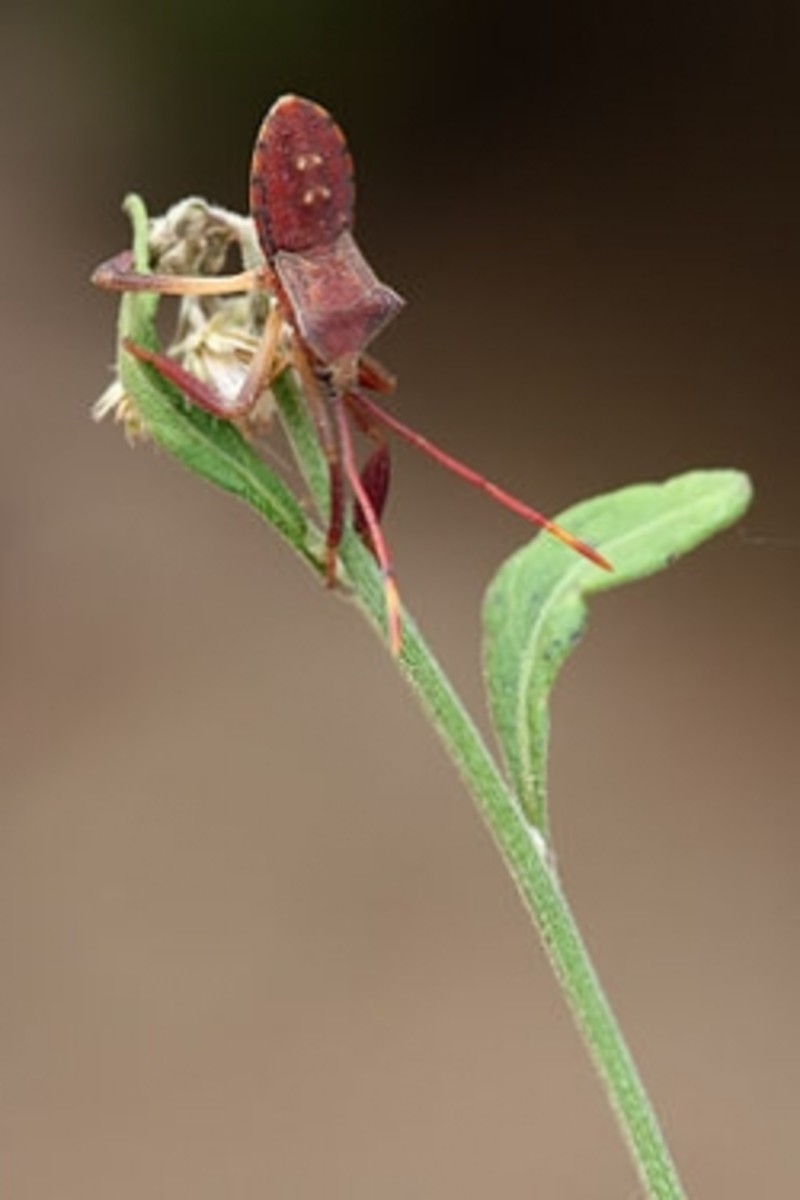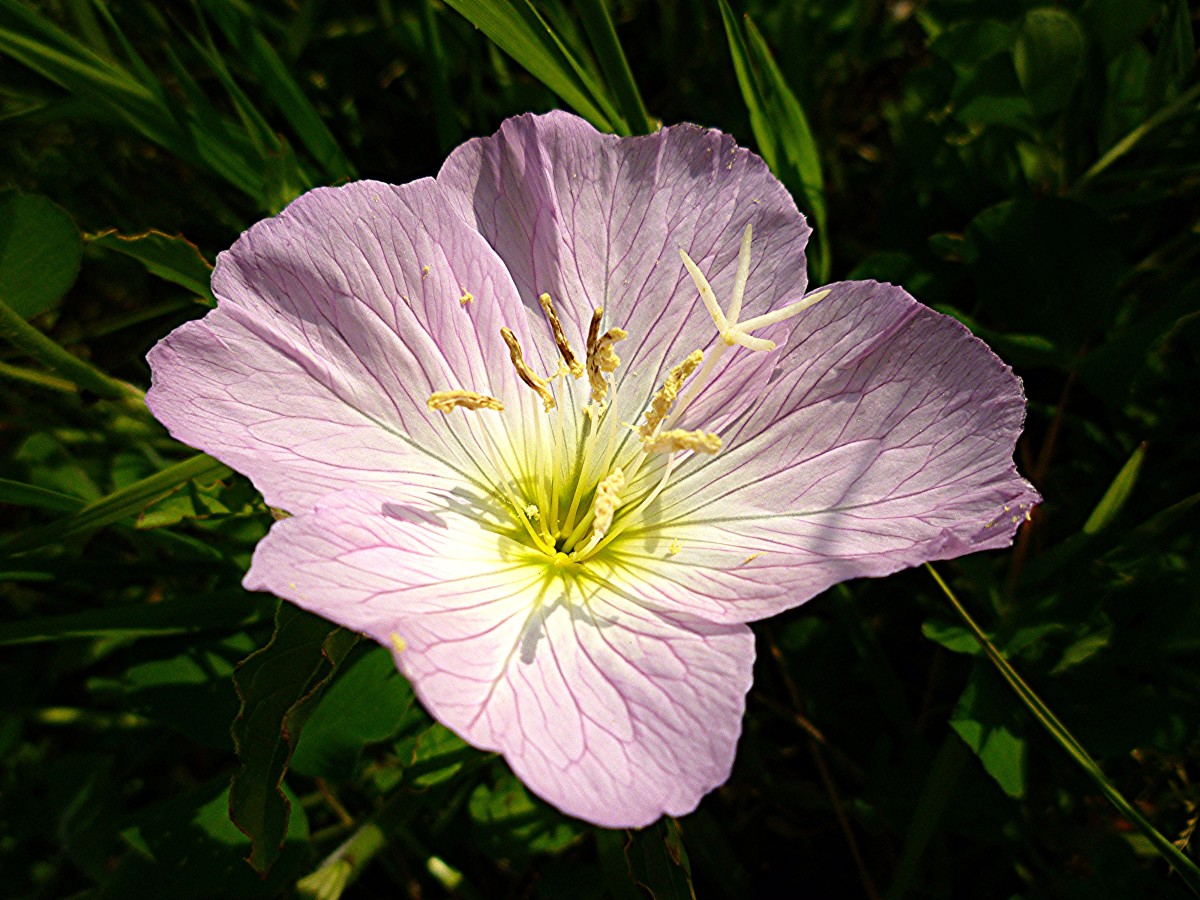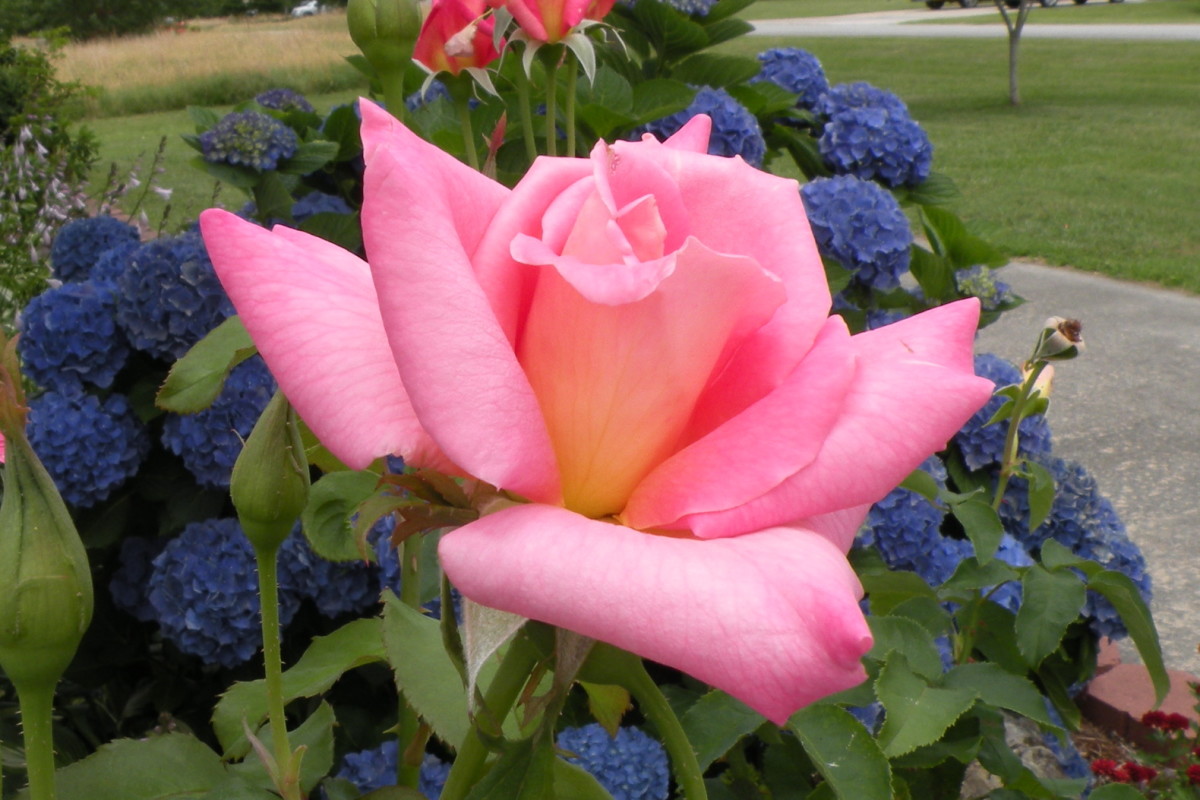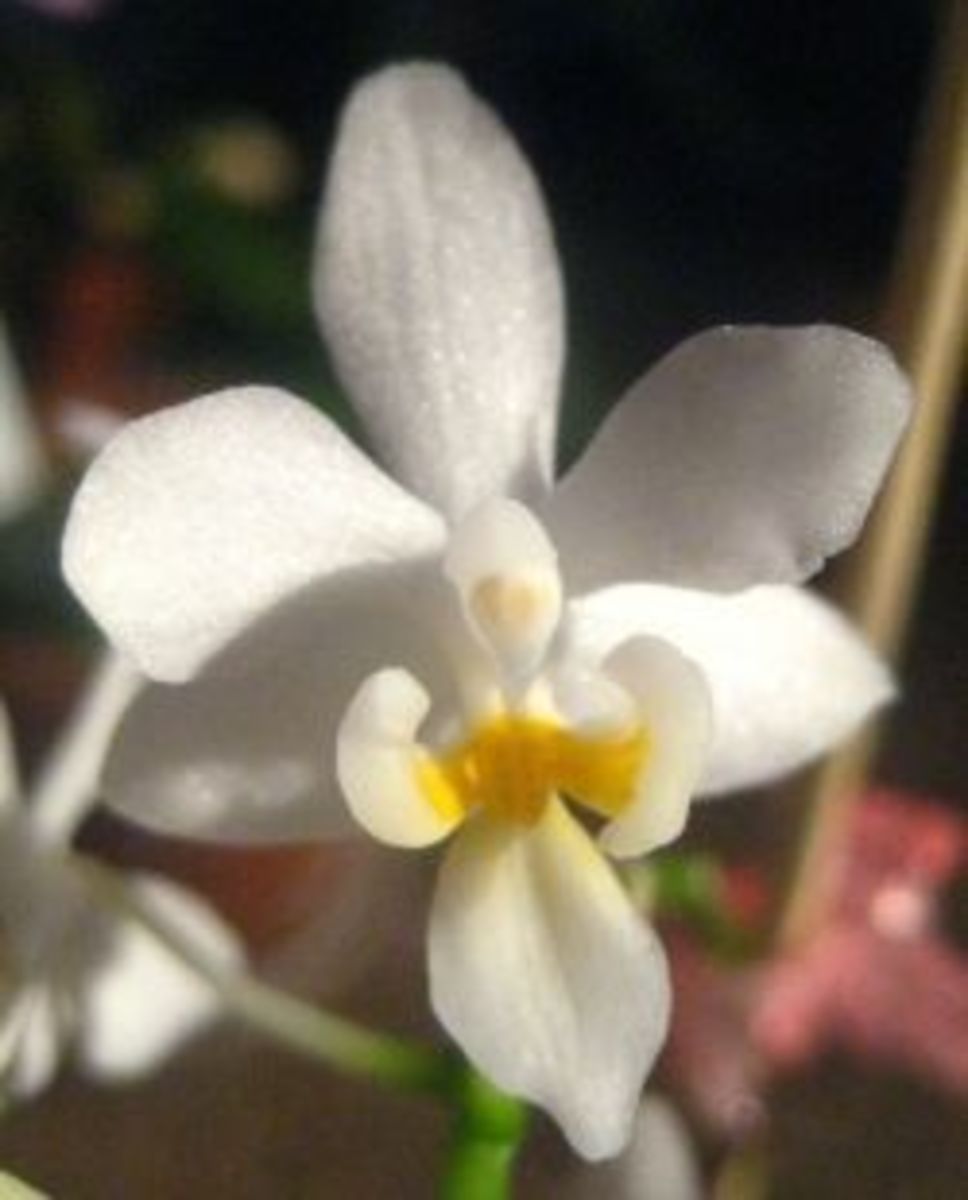How to Make a Wildflower Meadow
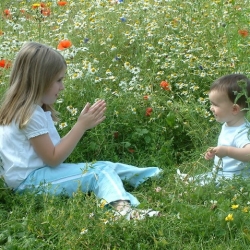
Turn Part of your Garden into a Haven for Wildflowers and Wildlife
Planting a mini wildflower meadow in your garden not only helps to wildlife and the environment, but helps to save our native wildflowers, too! With fears over declining bee numbers and gardens disappearing under layers of tarmac, it's more vital than ever to do our bit in our own backyard.
However, planting a wildflower meadow means more than simply sprinkling a wildflower seed mix into your lawn! There is some groundwork to be done first, however once established, you can enjoy your meadow in relative ease, with just one cut back a year necessary.
Whether you wish to create a miniature meadow in part of your garden, or completely turn a large open space over to nature, read on to find out how to make a wildflower meadow, which wildflowers and seed mixes are best, and how to prepare, maintain and care for your meadow.
Photo Credit: Wheeldon Copse Wildflower Meadow via Wikimedia Commons
Licensed under Creative Commons Attribution-ShareAlike 2.0 Generic License
.Why Plant a Wildflower Meadow?
Purely and simply, because our native wildflowers have disappeared from the land, replaced with intensive modern farming that leaves no room for natural wildflowers among the cornfields, and consequently, our wildlife is declining at a rapid rate. Most importantly, pollinators such as bees are declining in huge numbers, and this could cause disaster not only for the biodiversity of nature, but for us, too, because without pollinators, our life source (trees, plants, food) disappear too.
I live in England, where we have already lost 23 species of bee since 1800. British hoverflies and moths have declined at an alarming rate, and many of our beautiful native wildflowers are becoming endangered or are already extinct.
Photo Credit: Bee and Flower via Wikimedia Commons
Image in the Public Domain
.I have always been a fan of the cottage garden look anyway, so to me, a wild garden is heaven. The more of it I give over to nature, the better! But even if you prefer a relatively neat garden, please, please, please consider giving at least a small portion of it to nature. You will be helping wildlife on so many levels! Even the smallest patch can grow a stunning variety of flowers and become home to a heaving ecosystem of vital life.
Since letting parts of our garden go wild, we have been blessed with a plethora of insects, birds and other wildlife. My two-year-old daughter and I love foraging amongst the garden undergrowth to find the creatures lurking within... we have bountiful numbers of aphid-chomping ladybirds every year, an increased variety of moths and butterflies, and in addition to our usual garden birds, we are now welcoming newcomers such as bullfinches, the occasional woodcock, and even a pair of shy jays! And as for the bees, we have always had plenty of small bees attracted to the lavender and other cottage garden plants, but now we have finally started seeing an increase in the bumblebees again, which is wonderful news! It truly is worth going the wild route, for the sake of our beautiful biodiversity. I would far rather have a bit of a jungle at the bottom of the garden, where hidden fairy statues peep out from secret places, than a neatly manicured lawn devoid of any life. If you're lucky, you might spot a fox cub at the bottom of the garden, too!
How to Create a Wildflower Meadow
Preparing your Garden for a Wildflower Meadow - Getting Started
Once you have chosen how large an area to turn over to meadow, and where, you will need to prepare the ground before you can successfully sow your wildflowers. Depending on your garden, you may need up to 2 years to prevent previous growth returning, before you sow.
Photo Credit: Preparing Soil via Wikimedia Commons
Image in the Public Domain
- The good news is, if you have poor soil, a perennial wildflower meadow will thrive! You want to bring the nutrient level down as much as you possibly can, to prevent grasses growing back and taking over the plot, instead allowing for the wildflowers to grow. Alternatively, if you wish to plant an annual meadow (ideal for planting in an existing border), then rich soil is required.
- If your lawn is not very fertile, you won't need to do much. If it is, however, you will need to bring the nutrient level down by mowing the lawn regularly to keep it short, and not using any fertilisers, weed killers or feeds. Ensure you remove all grass cuttings when you mow. If your soils is very rich, consider removing the topsoil and sowing directly into rotovated sub-soil.
- You will need to clear the ground of current growth. Remove all the coarse-leaved grasses and ensure you keep on removing them, along with any vigorously growing weeds, such as thistles.
- When ready, you should rotovate the area and rake over.
- Allow at least 4-6 weeks for the soil to settle and to see if any regrowth of weeds occurs.
Best Book on How to Make a Wildflower Meadow

More Great Guides to Wildflower Meadows
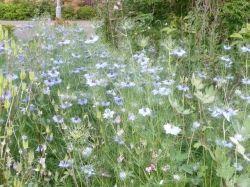
Which Plants are Best for a Wildflower Meadow?
The best flowers for your meadow are those which are native and suited to your area. Contact your local garden centres, plant societies and other organisations to do your research, and if you have any areas of wildflowers in the area already, ask the landowners if you can gather seeds from them.
You can also buy wildflower seed mixes or mats from garden centres and online (more on these near the end of the page). These are often themed, such as mixes to attract butterflies and bees, or garden birds. However, do your research and find out which mixes will be the best for you and your garden.
You also want to look for long-performing flowers that will be in bloom for several months, so that you get the most life out of your meadow as possible,
Photo Credit: Starflowers image copyright of the author
My Five Must-Have Wildflower Meadow Plants - Native British Wildflowers
These are my top five plants for growing a perennial wildflower meadow here in England. Of course, it's all down to personal taste, although Yellow Rattle or a similar plant is a must for the reasons listed below. A little delve into the natural history of your own area will provide plenty of ideas for you wherever you live in the world.
CLICK IMAGES FOR LARGER VIEW
- Yellow Rattle
This is an absolute essential in your wildflower mix as it is a hemiparasite, which weakens the surrounding grass and allows more delicate wildflowers to thrive with less competition
- Betony
The intense magenta colour of these flowers go on for months, lasting from early summer well into autumn. They are packed with nectar and consequently superb for bees and other insects.
- Meadow Cranes-bill
This is on my list mainly because I adore cranes-bills - they are one of my favourite plants - but also because it is a superb attractant for insects, including bees, and flowers for ages.
- Greater Knapweed
A superb source of nectar for insects and loved by butterflies, this is also a beautiful and showy plant that will add interest to your meadow.
- Tufted Vetch
This long-lasting flower is a superb bee-attractant, and its lovely purple flowers are plentiful and add wonderful colour to the meadow.
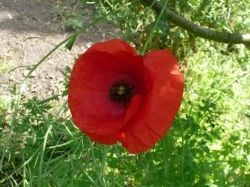
Growing an Annual Wildflower Meadow
Soil too Rich for a Meadow to Thrive?
If your soil is just too rich and fertile to grow a perennial wildflower meadow, you can try growing an annual one instead, using a mix of flowers found in cornfields.
This type of meadow is very colourful and pleasing to the eye, and an ideal format for an existing border.
Seed to sow for an annual cornfield mix can include:
Corncockle * Corn Poppies * Cornflowers *
Corn Marigolds * Wheat * Barley
Photo Credit: Self seeded poppy - image copyright of the author
Would you Grow a Wildflower Meadow?
Photo Credit: Wildflower Meadow in Cardiff via Wikimedia Commons
Licensed under Creative Commons Attribution-ShareAlike 2.0 Generic License
.Would you be willing to turn part of your garden over to nature?
Planting your Wildflower Meadow - When to Sow
Photo Credit: English Wildflowers via Wikimedia Commons
Licensed under Creative Commons Attribution-ShareAlike 2.0 Generic License
.- If you are sowing a perennial wildflower meadow, sow either in March/April, or in September. If you have heavy soil, then the former is better as seeds may rot in waterlogged soil over winter. Lighter soils can get away with autumn planting, although some may not germinate until the following spring.
- If you are sowing an annual cornflower meadow, then again, plant either in spring or autumn. The former will favour corncockle, while the latter will be better for poppies.
- Direct sow seed into the soil, but be aware that perennials may not flower much for a couple of years, until established. As a general rule, pure wildflower seed should be sown at 1g per square metre, and wildflower and grass mixes at 5g per square metre.
- You can mix the seed with silver sand to scatter more easily and evenly. Lightly rake in the seed, water well, and leave to grow naturally. Cover the area with netting if birds are an issue.
- You can also plant wildflowers as plug plants, preferably in autumn, which can lead to well-established plants.
How to Start a Wildflower Area
Cornfield Annual Native Wildflower Mix 100gVIEW DETAILS
Cornflower - Wildflower 150 SeedsVIEW DETAILS
100% Wildflower Basic Meadow Seed 100g. Native UK seedVIEW DETAILS
7,000 Seeds, Wildflower Mixture "Bird & Butterfly" (16 Species)VIEW DETAILS
Grass & Wildflower Seed Meadow Mix 100g. Native Uk SeedVIEW DETAILS
4 Pks Seeds - Bluebell, Chamomile, Cornflower, PoppyVIEW DETAILS
There is also a wonderful range of seeds available in the US too:
More Great Wildflower Stockists and Suppliers
- Wildflower Mixes from Sutton Seeds (UK)
Gorgeous Mediterranean or North American wildflower seed mixes - Wildflower Seeds from Greenfingers (UK)
Their selection include wildflower seed mixes, Kew Collection fragrant wildflower mixes, children's butterfly gardens and more - Wildflower Hummingbird Seed Mixture (USA)
American wildflower seed specifically to attract hummingbirds - Unusual, Wild and Native Plants from Beth Chatto (UK)
One of the leading garden specialists in the UK - Really Wild Flowers Selections (UK)
Specialising in wild flowers for wildlife gardens and wildflower meadows
How to Choose Plants for Bees - Sarah Raven on the Best Pollinators
I have been interested in planting wildflowers in the garden for many years, being a keen organic and wildlife gardener. However my interest in wildflower meadows was rekindled recently thanks to the series of programmes made by one of my favourite gardeners, Sarah Raven - Bees, Butterflies and Blooms.
The link above provides more information on the show and where to watch it. You can also watch Sarah in the clip below, finding out how to choose the best pollinator plants for bees to visit. Even if you are not able to grow a mini meadow, you can still help the bee population by planting a diverse range of the right kind of flowers.
Maintaining and Caring for your Wildflower Meadow - Enjoying your Wildlife Haven
Photo Credit: Woman using a Scythe via Wikimedia Commons
Image in the Public Domain
- Once your meadow is established, you will only need to cut it once or twice a year, at the end of the summer when all the flowers have had their chance to set seed. This will be at the end of August, or if you have planted species such as Agrimony or Betony, leave until September, to allow them to take hold within the meadow. You may also need to cut it in spring.
- New meadows and established meadows will need different amounts of maintenance, and timing will vary depending on whether you have a spring or summer flowering meadow. This RHS guide to wildflower meadow maintenance explains the basics.
- Small meadows can be maintained using a strimmer or a good old fashioned scythe.
- Larger meadows should be cut with a power scythe, as it will need to be cut to around 1cm.
- When cutting perennial meadows, remember to rake up and remove all the debris to prevent nutrients entering back into the soil.
Essential Reading on How to Make a Wildflower Meadow - Best Resources, Guides and Tips
- Establishing a Wildflower Meadow (RHS)
RHS guide to growing a wildflower meadow with tips on both annual and perennial mixes - How to Create a Mini Wildflower Meadow (Sarah Raven)
Sarah Raven's guide to creating a mini hay meadow or wildflower meadow, with her preparation and sowing guide, along with her top 10 wildflowers to add to the mix - How to Create a Pictorial Wildflower Meadow (Sarah Raven)
Sarah Raven's guide to the cornflower meadow without the corn, for a stunning display of colour that is better suited to rich soils - How to Make an Organic Wildflower Meadow (BBC Gardening)
Preparation, planting and maintenance guide from BBC Gardening, on how to create a wildflower meadow in your garden - Wildflower Meadow Maintenance (RHS)
RHS guide to maintaining your meadow, covering when and how to cut and care for your meadow - How to Grow a Wildflower Meadow
Guide from The Daily Telegraph, with some handy hints on where to find the best seed mixes and tips - The Postcode Plants Database
This fantastic resource from the Natural History Museum allows you to find out what your native plants are by postcode, so you can plant exactly the right species for your area!








